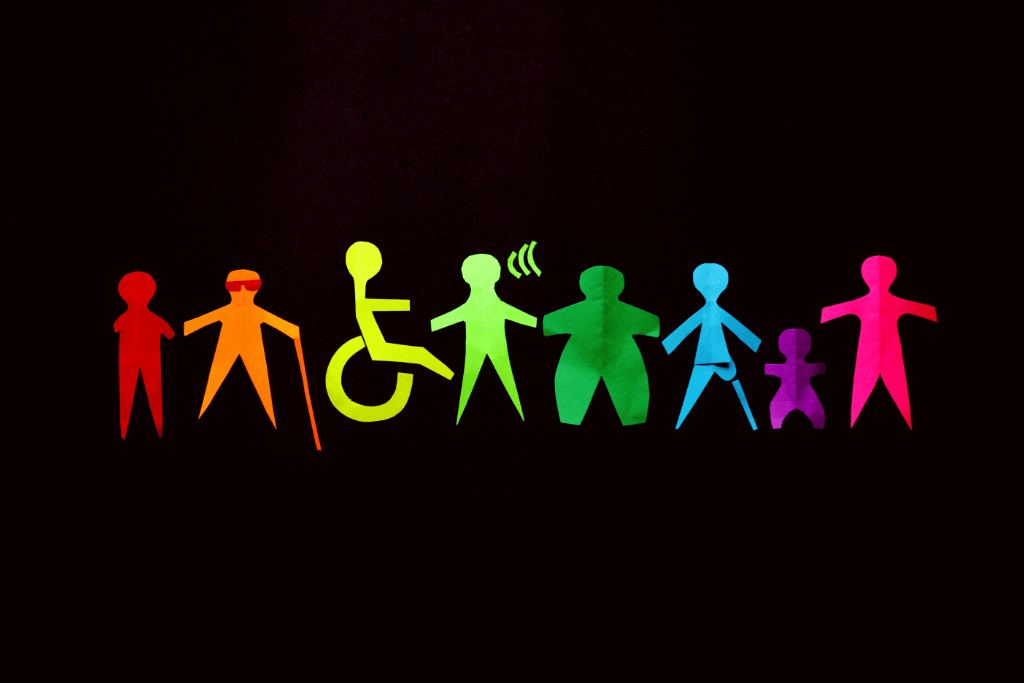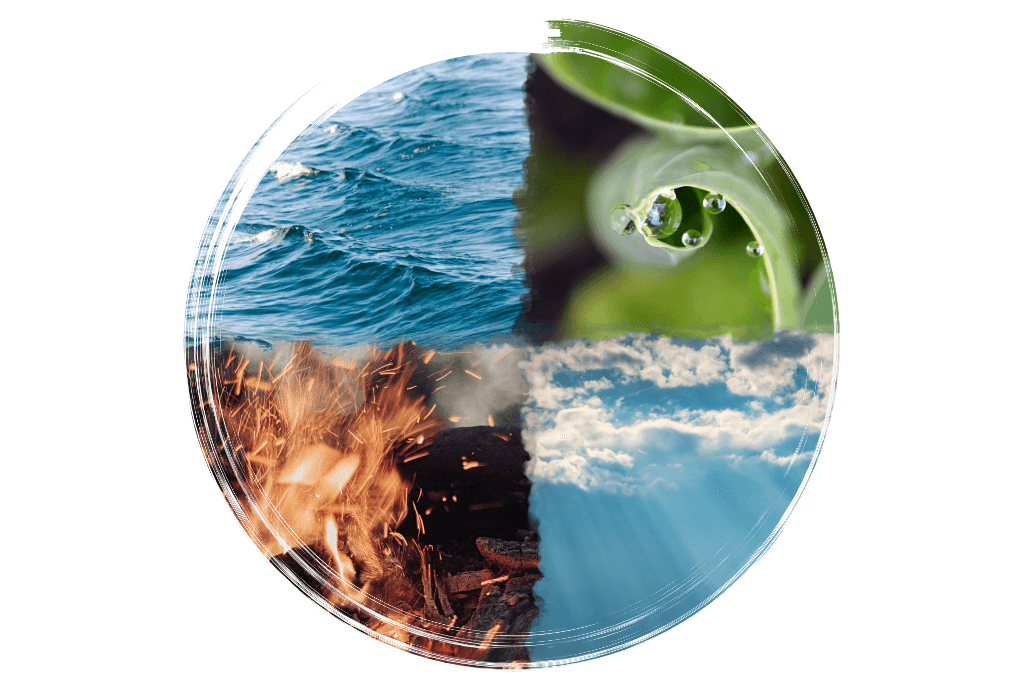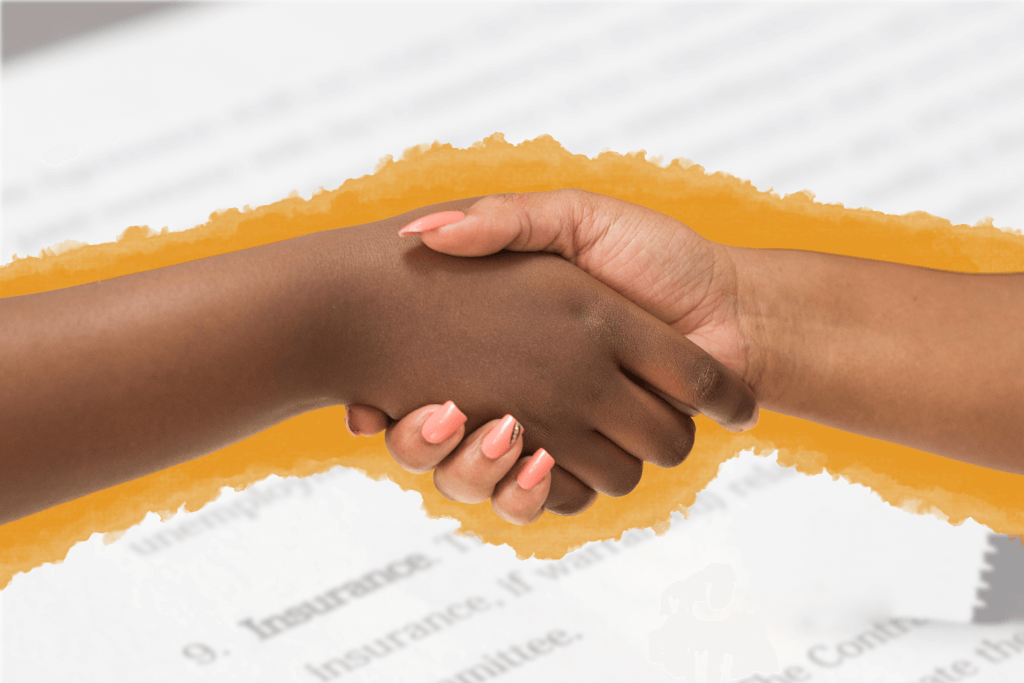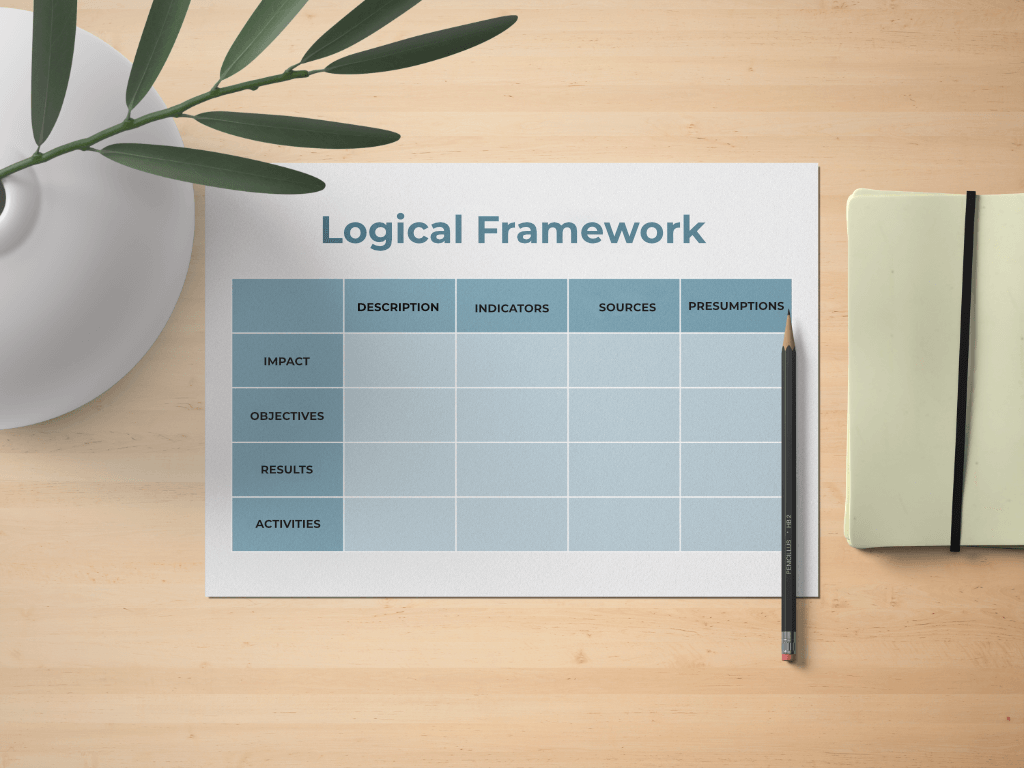According to a study conducted by Deloitte, 81% of organizations have already formalized some affinity group to take the inclusion and diversity agenda forward.
Affirmative vacancies are increasingly common, and the trend is that justice itself will start to monitor more closely the relationship between sociodemographic profiles, positions and salaries in organizations, as has been the case for several years in countries such as the United Kingdom.
Even so, inequality persists.
Equal positions still offer lower salaries for women. Black, Indigenous and disabled people are still a minority in leadership positions. Trans people are still targets of violence in the corporate world. This is when these groups become part of the companies’ workforce.
The challenges to transform this scenario go through several phases.
It starts with the difficulty for organizations to get out of their bubbles and communicate the availability of open positions for diverse talent. Few companies also understand the importance of contributing to making people in their communities more competitive by offering opportunities to those who don’t have them.
Then, in recruitment, there is the difficulty of recruiting without the influence of biases and, from hiring, building a safe and inclusive environment for the entire team, through policies, campaigns and actions tracked by indicators which are in turn linked to goals.
Finally – and perhaps here we have the biggest obstacle – it is necessary to guarantee equity at the top of the pyramid, with a leadership that does not need to be convinced of the importance of the theme, but that acts as a protagonist of this transformation.
In this context, how is your company doing?
If the sustainability of your business depends on a fair, equitable, diverse and inclusive environment, what is your current level of maturity to stay in the competition?
Concepts: justice, equity, diversity and inclusion
To understand what to do in each situation, you first need to understand what exactly justice, equity, diversity and inclusion (JEDI) means in the corporate environment. What does each of these words mean to you? Do you perceive them in your day-to-day work?
Justice
Let’s start with the concept of justice. I imagine you have heard – or probably used – the expression “that’s not fair!”.
But what does it mean to be unfair or fair in practice?
In the social context, the focus of this conversation, justice means the fair distribution of wealth, opportunities and privileges within a society. Mary-Frances Winters, founder and CEO of The Winters Group, Inc., reminds us of what psychology calls the “fairness fallacy,” when individuals seek to apply equal rules to all people in their lives. According to Winters, we tend to judge something as unfair when it doesn’t turn out the way we expect.
Has that ever happened to you?
We understand fairness as treating all people equally, which is the definition of equality. It turns out that fairness is almost always interpreted from our own perceptions of the world, our lenses and experiences in relation to something or someone.
But justice is not an objective concept, not absolute, and not binary. Justice is relative and can be very complex. Understanding this is the first step towards ensuring a fair environment.
Equity
Is justice the same as equality? No.
Equity and equality are different concepts, although there is often confusion about this. While equality is concerned with offering equal treatment to all people, equity is concerned with the outcome of that treatment. That is, it is committed to giving people what they need to succeed, understanding that their experiences, and therefore their needs, are not equal.
The following image illustrates this context well.
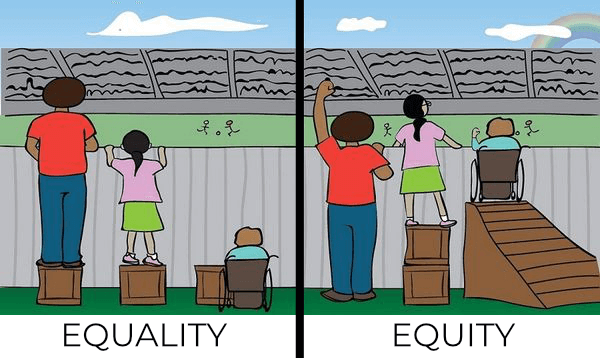
In this picture, there are three people trying to watch a match over a wall: one is taller, the second is of average height and the third is in a wheelchair. In the image on the left, the first and second people are on a crate. Both are able to watch the game, but the one of average height has more difficulty. The third person has a crate available for them but, because of their wheelchair, they cannot use it. All three people have been given equal crates: that is equality. But not all of them can watch the game.
In other words, equality does not guarantee justice.
In the next image, we see the tallest person with their feet on the ground, the person of average height on two crates and the person with a disability, in a wheelchair, watching the game on a ramp. Everyone gets the support they need, so everyone can watch the game comfortably. This is equity: offering different supports to different people, as their needs are not the same.
Equitable lenses ensure fairer environments.
Diversity
Diversity is the essence of our society.
It is the immeasurable number of ways in which we are different and similar, including characteristics we can and cannot see. Each person is a universe of particularities such as religiosity, gender, color, ethnicity, mental condition, physical condition, sexual orientation, social class, age, body size, marital status, parenting, region where they live, and so on.
Because of our historical context of prejudice and social exclusion, these peculiarities will offer more or less privileges to a person.
And they can combine in thousands of different ways, generating unique identities: Mr. John, for example, is a white man, earning less than 2 minimum wages, Jewish, disabled, homosexual and a father.
Mrs. Maria, on the other hand, is a black, Catholic, single, bisexual woman who earns more than 9 minimum wages and is over 50 years old.
Discriminated identities require corrective action for equity to be achieved. The following wheel of privilege shows how these combinations put each person in a place of their own, which creates challenges or responsibilities, depending on the group they are relating to:
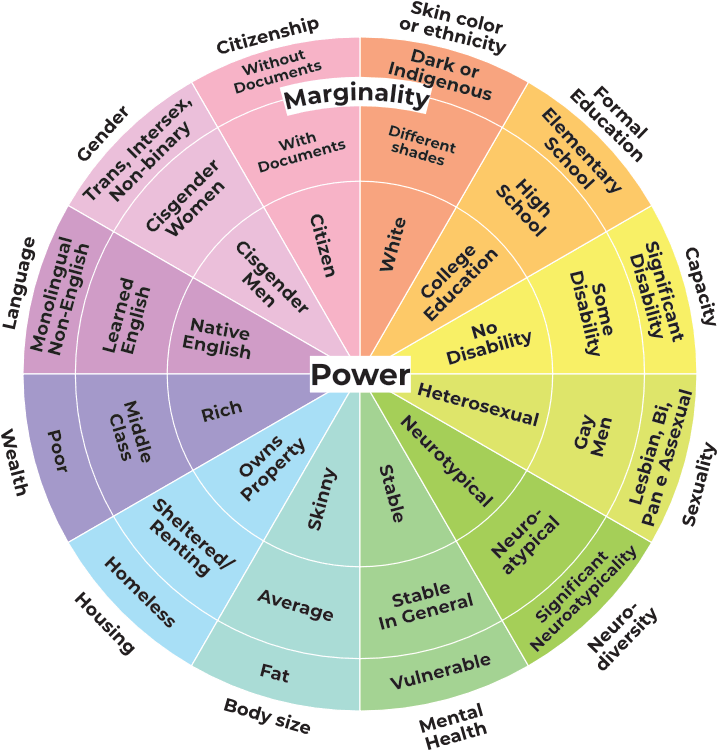
Inclusion
Inclusion, finally, is creating an environment where all people are celebrated for being who they are, regardless of all this plurality.
A healthy and inclusive environment is one where all people, in their uniqueness, feel they belong. They feel that they matter. But for that, they need to be heard.
It is necessary that management, HR, the board, can understand the power relations and oppression that exist within the company, look at the groups of people who are in a marginalized position and ask them: what is necessary for you, specifically, to achieve success? What are the systemic barriers I need to remove, and what are the bridges I need to create, so that this environment becomes equitable, not just equal, for you?
Justice, Equity, Diversity and Inclusion in business
If you want to start rolling up your sleeves in your company, the first step is to understand the current situation. To do this, you need to conduct a Sociodemographic Profile survey, or Diversity Census, which must be answered anonymously by the people who make up the current workforce. The results are cross-referenced and analyzed from a JEDI perspective, generating a map where you can see transparently what is good and what needs to be improved.
From the inside out
At We.Flow, we believe that, to be effective, transformation must happen from the inside out. In other words, it is necessary to have a broad awareness of the social problems that lead to companies and, from there, to evaluate how I contribute to feeding the cycle of injustice and exclusion.
This is not an easy task. Especially because, when reflection is done in a genuine way (which is the only way to make it effective), it takes us out of our comfort zone. This happens because we have to look at thoughts and actions that we are not proud of, but that have been introjected into us by the external environment, and today make up our identity.
According to Deloitte, it is precisely in the culture that the greatest obstacles to developing diversity practices reside. To assist in this process of deconstruction and cultural transformation, we offer sensitizations that combine context and data with theories related to levels of consciousness and affect.
Thus, we seek to create a safe environment for people to realize where they are in the wheel of privilege, to understand how and why their identities were composed from these places, and to feel comfortable taking responsibility for restructuring themselves and then the environment around them.
Methodology
From there, we move on to the more pragmatic steps.
The first step after the initial diagnosis is the elaboration, based on the Diversity Census and the objectives defined by the company, of the JEDI Strategy.
According to the model below, our methodology has the capacity to involve everything from the definition of objectives, prioritization, creation and cascading of goals and indicators, internal communication, integration between areas and development of actions, programs, policies and processes, analysis and, finally, support in the review of reports and external communication.
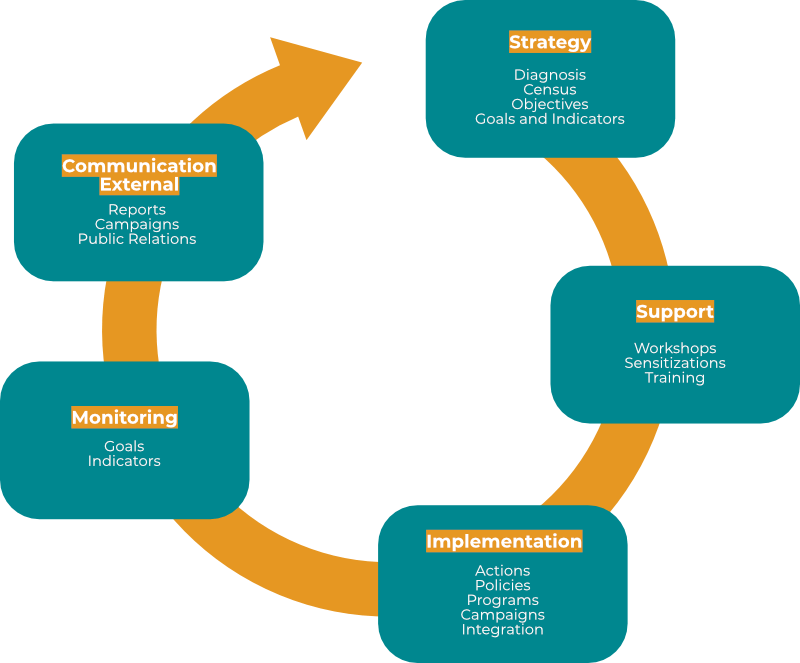
Approach
This methodology is applied on the approach developed from global references and adapted to the local context, which we call NEPALS.
It highlights different levels where action can be taken: from what we call the Source, i.e. investment in opportunities for the community from which diverse talents are born, through the Entry of these people into the company, their Permanence, up to the Ascension to Leadership positions. It is essential that policies and processes extend to all stakeholders of the organization, ensuring that the entire ecosystem is covered.
Nascent: supporting marginalized communities
Entry: Recruitment and Selection
Permanence: data, programs and internal policies
Ascent: evaluations, promotions, feedbacks
Leadership: Conscious and Diverse Leadership
Stakeholders: integral regeneration

